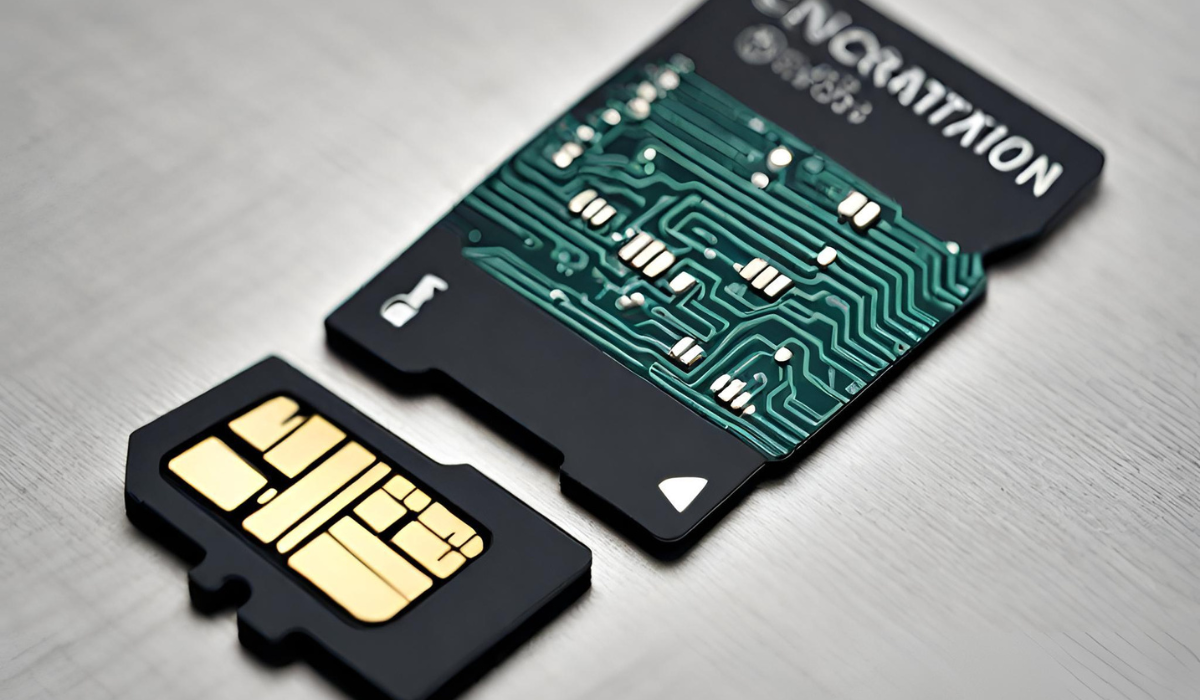To retrieve data from an encrypted SD card, insert the card into an SD card reader connected to a computer. Launch the data recovery software and follow the on-screen instructions. Enter the encryption key when prompted. If the key is unavailable, use specialized software or services to bypass the encryption. Once the encryption is bypassed, select the desired data to retrieve and follow the software’s instructions to complete the extraction.
In today’s digital age, the security of personal data is of utmost importance. With the increasing use of various storage devices, such as SD cards, it is crucial to understand how to retrieve data from an encrypted SD card. Encryption plays a vital role in protecting sensitive information from unauthorized access, but it can also pose a challenge when attempting to access encrypted data. I will deliver a step-by-step guide on retrieving data from an encrypted SD card.
Understanding Encryption and SD Cards

Before delving into retrieving data from an encrypted SD card, it is essential to familiarize yourself with encryption and its role in data protection. Encryption is a process that scrambles data using a specific algorithm, making it unreadable to anyone without the decryption key. SD cards, or secure digital cards, are commonly used to store various data types, including photos, videos, and documents. They often come with built-in encryption features to ensure the security of the stored information.
What is Encryption?
Encryption is a method of encoding data, making it unreadable to anyone who doesn’t possess the decryption key. It provides a layer of security by making it challenging for unauthorized individuals to access sensitive information. When data is encrypted, it is transformed into a format that no one can easily understand without the appropriate key to decrypt it.
Different types of encryption algorithms are used to secure data, such as Advanced Encryption Standard (AES), RSA, and Triple Data Encryption Standard (3DES). These algorithms use complex mathematical computations to scramble the data, ensuring its confidentiality and integrity.
Encryption is widely used in various industries, including finance, healthcare, and government, to protect sensitive information from unauthorized access and data breaches. It is an essential component of cybersecurity measures and is crucial in protecting personal and confidential data.
The Role of Encryption in Data Protection
Encryption plays a critical role in safeguarding data from unauthorized access. It ensures that even if someone gains physical possession of an encrypted SD card, they won’t be able to access the stored information without the encryption key or password. This enhances the security and confidentiality of the data, especially in cases where the SD card gets lost or stolen.
Encryption provides additional protection for sensitive data, making it extremely difficult for hackers or malicious individuals to decipher the information. It helps prevent data breaches and unauthorized disclosure of personal, financial, or sensitive information.
Furthermore, encryption can also protect data during transmission. When data is encrypted before being transmitted over networks or the internet, it becomes virtually impossible for eavesdroppers to intercept and understand the information. This is particularly important when sending confidential files or sensitive data over unsecured networks.
Basics of SD Card Technology
Before retrieving data from an encrypted SD card, having a basic understanding of SD card technology is helpful. SD cards are commonly used as portable storage devices due to their small size and high capacity. They utilize flash memory technology, allowing quick and reliable data storage. SD cards come in various capacities, ranging from a few gigabytes to several terabytes, catering to the diverse storage needs of users.
SD cards are compatible with digital cameras, smartphones, tablets, and laptops. They provide a convenient way to expand the storage capacity of these devices, allowing operators to store more photos, videos, music, and other files.
One of the key advantages of SD cards is their durability and reliability. They are designed to withstand various environmental conditions, including temperature fluctuations, shock, and vibrations. This makes them suitable for use in different settings, such as outdoor photography or industrial applications.
SD cards also have different speed classes, indicating their data transfer rates. The higher the speed class, the faster the data can be read from or written to the card. This is particularly important for tasks that require quick access to large files, such as recording high-definition videos or capturing burst-mode photos.
In addition to their storage capabilities, SD cards often feature built-in security features, including encryption and password protection. These features allow users to secure their data and prevent unauthorized access, protecting their valuable information.
Preparatory Steps Before Data Retrieval
Before retrieving data from an encrypted SD card, certain preparatory steps must be undertaken to ensure a smooth and successful recovery. These steps involve gathering the necessary tools and considering essential safety measures to protect the integrity of the stored data. Additionally, assessing the level of encryption employed on the SD card will help determine the appropriate data retrieval method.
Necessary Tools for Data Retrieval
Retrieving data from an encrypted SD card requires specific tools to facilitate the process. It is essential to have a reliable SD card reader that supports encrypted cards. Additionally, having access to a computer with appropriate software capable of decrypting the data is crucial. Researching and selecting tools renowned for their reliability and efficiency in data recovery is advisable.
Safety Measures to Consider
Data retrieval from an encrypted SD card should always be carried out with caution to prevent any accidental damage or loss of data. Working in a clean and static-free environment is suggested to avoid any potential damage to the SD card. Additionally, ensuring that the computer used for data retrieval is secure and does not risk compromising the stored data is of utmost importance.
Assessing the Level of Encryption
Before proceeding with the data retrieval process, it is crucial to assess the level of encryption applied to the SD card. This will help determine the appropriate method and tools for successful data extraction. Higher levels of encryption may require more advanced techniques and tools, so understanding the complexity of the encryption used is essential.
Detailed Process of Retrieving Encrypted Data

Once you have completed the necessary preparatory steps, it’s time to embark on the detailed process of retrieving encrypted data from an SD card. This step-by-step guide will walk you through the initial steps, navigating the encryption barrier and achieving successful data extraction.
Initial Steps in Data Retrieval
The first step in the data retrieval process is to insert the encrypted SD card into the SD card reader connected to your computer. Confirm that the card is properly inserted and recognized by the system. Next, launch the data recovery software and follow the on-screen instructions to initiate recovery.
Navigating the Encryption Barrier
When dealing with an encrypted SD card, you will typically be prompted to enter the encryption key or password to gain data entry. If you know the encryption key, enter it correctly to retrieve data. However, you may need to utilize specialized software or services to bypass encryption barriers if you don’t have the encryption key. Exercise caution and use legal and legitimate methods to retrieve the data.
Successful Data Extraction
Once you have successfully bypassed the encryption barrier, you can extract the desired data. Select the files you wish to improve and follow the software prompts to initiate the data extraction. Depending on the size and complexity of the data, this process may take some time. Be patient and let the software complete the extraction process to ensure the integrity and accuracy of the retrieved data.
Common Challenges in Retrieving Encrypted Data

While retrieving encrypted data from an SD card can be a relatively straightforward process, occasionally, challenges may arise along the way. Awareness of these challenges and understanding how to overcome them can significantly improve the chances of successful data retrieval.
Dealing with Corrupted Data
In some cases, the encrypted SD card may be corrupted, making it difficult or impossible to access the data. Corrupted data can result from various factors, including physical damage to the card or improper handling. Utilizing specialized data recovery software for dealing with such scenarios is advisable when facing corrupted data. These tools can often recover data from partially corrupted SD cards, increasing the likelihood of successful data retrieval.
Overcoming High-Level Encryption
SD cards may use high-level encryption algorithms that offer enhanced security but pose challenges when retrieving data. Overcoming high-level encryption often requires advanced tools and techniques. It is recommended to consult experts or seek professional assistance to ensure safe and successful data retrieval without compromising the integrity of the encrypted data.
Handling Large Data Volumes
Retrieving large data from an encrypted SD card can be time-consuming and resource-intensive. The time required for data extraction may vary depending on the computer’s processing power and the SD card’s capacity. It is important to allocate sufficient time and resources for the retrieval process to avoid any interruptions or potential data loss.
Key Takeaways
- Understanding Encryption: Encryption scrambles data using an algorithm, making it unreadable without the decryption key. Various algorithms like AES, RSA, and 3DES secure data.
- SD Card Basics: SD cards are portable storage devices using flash memory technology, ranging in capacities from a few gigabytes to several terabytes. They also come with different speed classes.
- Preparation is Key: Gather necessary tools like a reliable SD card reader and appropriate decryption software before retrieving data. Ensure a clean and static-free environment.
- Bypassing Encryption: If you possess the encryption key, it simplifies the retrieval process. If not, you might need specialized tools or expert assistance.
- Possible Challenges: You may face issues like corrupted data, high-level encryption, or retrieving large data volumes.
FAQs
What is encryption, and why is it used on SD cards?
Encryption is a method of encoding data, making it unreadable without the decryption key. It ensures the security and confidentiality of data stored on SD cards, especially if they get lost or stolen.
How do I know if my SD card is encrypted?
When attempting to access an encrypted SD card on a computer, you’ll typically be prompted to enter the encryption key or password.
What should I do if I don’t have the encryption key?
If you’ve lost the encryption key, you may need specialized software or services to bypass encryption barriers.
What challenges might I encounter when retrieving encrypted data?
Common challenges include dealing with corrupted data, overcoming high-level encryption, and handling large data volumes.
How can I prevent data corruption on my SD card?
Always safely eject your SD card from devices, avoid exposure to extreme environmental conditions, and handle it carefully.
Conclusion
Retrieving data from an encrypted SD card requires the right tools, knowledge of encryption, and patience. While encryption serves as a safeguard for data, it can pose challenges during data retrieval. Being prepared and informed can simplify the process and increase the chances of successful and safe data extraction. Always prioritize the security and integrity of your data.
